Finding health communication on “the other side” of a Möbius loop
It took a quarter of a century for Naomi Sugimoto, a former child patient of Keio University Hospital, to come to terms with her sickly past and get involved in the study of health communication on Keio’s Shonan Fujisawa campus. Naomi, now a professor at the Faculty of Nursing and Medical Care, tells us her life history and shares her current research interests.
SUGIMOTO, Naomi
Professor
Faculty of Nursing and Medical Care
Free at last
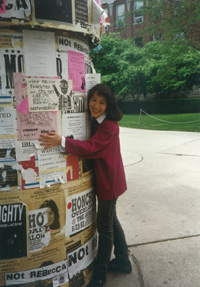 For ten years from age two, I suffered from enormous stomach pain. Medical technology at that time was not as sophisticated as it is now and doctors had a hard time finding its cause. Because of that, I had to go through a lot of pain, both physical and psychological: I remember being totally scared when I could be partially awake from general anesthesia that had gone awry; once I had to swallow ten raw eggs all at once for some sort of medical test; at another time a pharmacist snapped at me, “kids like you have no business knowing what kind of medicine you are taking”; and a resident made twenty three desperate attempts to draw blood from me before breaking down and bursting into tears at the foot of my bed.Despite these painful memories, I did not grow to “hate” hospitals because I finally met caring healthcare professionals at Keio University Hospital. During my annual checkups there, my doctors always encouraged me to expand my horizons by saying that it was not just for myself but also for the children who were currently fighting against the same illness or those who had lost their battle. It was these words of support that helped me stand the trials of life for the many years that followed. When I finally made a full recovery, however, I planned a great escape. Though I didn’t “hate” hospitals, I had no intention of becoming a doctor or a nurse. I felt that studying anything related to medicine would be too painful. I wanted to run, as fast as I could, in the opposite direction to a safe place so that my sickly past could never find me again. So I started studying intercultural communication in my first year at college but became frustrated as there were no explanations on the theories or methods behind what was being taught in those classes. So, seven years after my 8-hour-long surgery, I found myself studying interpersonal communication as a Rotary scholar at the University of Illinois, one of the world’s leading departments in the discipline. Seven years of undergraduate and graduate studies at Illinois were so intellectually stimulating and inspiring that I almost forgot all about my childhood illness.
For ten years from age two, I suffered from enormous stomach pain. Medical technology at that time was not as sophisticated as it is now and doctors had a hard time finding its cause. Because of that, I had to go through a lot of pain, both physical and psychological: I remember being totally scared when I could be partially awake from general anesthesia that had gone awry; once I had to swallow ten raw eggs all at once for some sort of medical test; at another time a pharmacist snapped at me, “kids like you have no business knowing what kind of medicine you are taking”; and a resident made twenty three desperate attempts to draw blood from me before breaking down and bursting into tears at the foot of my bed.Despite these painful memories, I did not grow to “hate” hospitals because I finally met caring healthcare professionals at Keio University Hospital. During my annual checkups there, my doctors always encouraged me to expand my horizons by saying that it was not just for myself but also for the children who were currently fighting against the same illness or those who had lost their battle. It was these words of support that helped me stand the trials of life for the many years that followed. When I finally made a full recovery, however, I planned a great escape. Though I didn’t “hate” hospitals, I had no intention of becoming a doctor or a nurse. I felt that studying anything related to medicine would be too painful. I wanted to run, as fast as I could, in the opposite direction to a safe place so that my sickly past could never find me again. So I started studying intercultural communication in my first year at college but became frustrated as there were no explanations on the theories or methods behind what was being taught in those classes. So, seven years after my 8-hour-long surgery, I found myself studying interpersonal communication as a Rotary scholar at the University of Illinois, one of the world’s leading departments in the discipline. Seven years of undergraduate and graduate studies at Illinois were so intellectually stimulating and inspiring that I almost forgot all about my childhood illness.
Facing the future through coming to terms with the past
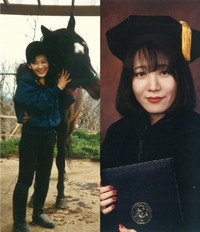 Upon completion of my Ph.D., I returned to Japan. About five years later, I was asked if I would be interested in teaching at the Faculty of Nursing and Medical Care, to be founded on Shonan Fujisawa Campus. To be honest, I was not too enthused by the offer at first. I had just published a book and several articles in the United States on American and Japanese styles of apology and had started enjoying the fruits of my labor. I was getting my name known in the field. It seemed too risky to halt my budding career as an intercultural communication scholar and start it all over in the yet little studied field of health communication in a nursing department which did not even exist at that point. The intellectual side of me would never allow such a reckless gamble.
Upon completion of my Ph.D., I returned to Japan. About five years later, I was asked if I would be interested in teaching at the Faculty of Nursing and Medical Care, to be founded on Shonan Fujisawa Campus. To be honest, I was not too enthused by the offer at first. I had just published a book and several articles in the United States on American and Japanese styles of apology and had started enjoying the fruits of my labor. I was getting my name known in the field. It seemed too risky to halt my budding career as an intercultural communication scholar and start it all over in the yet little studied field of health communication in a nursing department which did not even exist at that point. The intellectual side of me would never allow such a reckless gamble.
However, it was the emotional side of me, or more precisely, the long-held sense of indebtedness to the Keio medical community, that eventually convinced me that it was the right thing to do. Joining the Faculty of Nursing and Medical Care meant to me both a step forward into the totally unfamiliar world of nursing and a walk back through memory to the ever-so-familiar sanctuary called Keio.
 One of my favorite nursing concepts says “nurses use themselves as instruments of care.” I may not be a nurse but I could follow their footsteps and myself serve as an instrument of communication training in healthcare. When I was trying hard to distance myself from my past, I never expected that my future would give me a chance to reconcile with it.”
One of my favorite nursing concepts says “nurses use themselves as instruments of care.” I may not be a nurse but I could follow their footsteps and myself serve as an instrument of communication training in healthcare. When I was trying hard to distance myself from my past, I never expected that my future would give me a chance to reconcile with it.”
Time played its role during this life-altering transition: I was able to remember my illness without wincing in fresh pain because it had been more than twenty years since the surgery: To healthcare professionals, I was not a disgruntled former patient but an expert who could offer professional advice, thanks to over fifteen years of academic training in the field of communication.
Reality shock
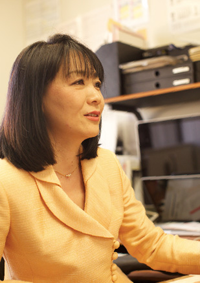 People have told me that I may be the very first person to become a full-time faculty member in a health-related department in Japan with a Ph.D. in communication. My fellow communication researchers both in Japan and abroad sent me off to the unknown territory of nursing with a combination of blessing and envy, saying that I should be able to collect clinical data like no outside researchers could. Yet it did not take me long to realize that things would not be that easy. Indeed, what I found was quite disheartening.
People have told me that I may be the very first person to become a full-time faculty member in a health-related department in Japan with a Ph.D. in communication. My fellow communication researchers both in Japan and abroad sent me off to the unknown territory of nursing with a combination of blessing and envy, saying that I should be able to collect clinical data like no outside researchers could. Yet it did not take me long to realize that things would not be that easy. Indeed, what I found was quite disheartening.
With the importance of communication being widely recognized, numerous attempts had been made to train healthcare professionals in communication skills. Communication is a full-fledged social scientific field of study that explores effective ways to improve communication, drawing on the findings of experiments, surveys, or observations. However, most of the existing training programs were conducted inappropriately in terms of their content or approach by people who had never received proper training in the field and thus relied upon superficial “techniques” or unwarranted idealism. Those self-proclaimed “specialists” in communication unnecessarily intimidated otherwise perfectly fine healthcare professionals. Against such a backdrop, I had a hard time setting myself apart from them and approaching healthcare professionals who desperately needed my help.
I was also shocked to realize that even as an “insider,” I could not gain access to clinical data. Given the heightened awareness of patient rights and research ethics, I probably should have known better and anticipated strong resistance to my presence as a researcher in a clinical setting but I was too naïve and optimistic to see that before committing myself to the new position.
Nursing and Intercultural Communication
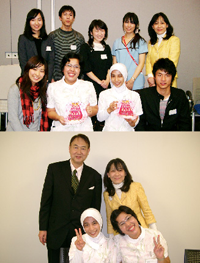 The reality shock hit me hard and I started feeling that my lack of medical credentials was keeping me away from doing what I had set out to do in the first place: pay back the medical community. That was when my first break came from another SFC department. Together with Professor Toru Nomura from the Faculty of Policy Management, who heads the Malay-Indonesian program on our campus, I launched an action research project in 2009. It aimed to instill and improve intercultural competence in Japanese colleagues of Indonesian nurse candidates who are currently working in Japan under the Japan-Indonesia Economic Partnership Agreement.
The reality shock hit me hard and I started feeling that my lack of medical credentials was keeping me away from doing what I had set out to do in the first place: pay back the medical community. That was when my first break came from another SFC department. Together with Professor Toru Nomura from the Faculty of Policy Management, who heads the Malay-Indonesian program on our campus, I launched an action research project in 2009. It aimed to instill and improve intercultural competence in Japanese colleagues of Indonesian nurse candidates who are currently working in Japan under the Japan-Indonesia Economic Partnership Agreement.
There existed numerous support programs for the Indonesian nurse candidates themselves, but none to our knowledge to support Japanese hospital employees who were equally struggling in their very first encounter with overseas trained nurses. In order to prevent possible intercultural frictions, we conducted intercultural communication training for the Japanese and advised or mediated at times of potential or actual conflicts.
Emergency Medicine and Communication Education
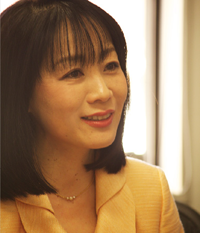 At about the same time as this breakthrough, another great offer for interdepartmental collaboration came from the School of Medicine. Dr. Kazuhiko Sekine, a lecturer in Emergency and Critical Care at that time, and I met at an off-campus event, which eventually grew into a joint research project, a brainchild of Professor Shingo Hori of Emergency and Critical Care. In this project I observe communication activities at the ER on our Shinanomachi campus several times a month.
At about the same time as this breakthrough, another great offer for interdepartmental collaboration came from the School of Medicine. Dr. Kazuhiko Sekine, a lecturer in Emergency and Critical Care at that time, and I met at an off-campus event, which eventually grew into a joint research project, a brainchild of Professor Shingo Hori of Emergency and Critical Care. In this project I observe communication activities at the ER on our Shinanomachi campus several times a month.
Those visits led me to firmly believe that not just healthcare professionals, but also patients themselves must become better communicators if they were to receive quality care. Thus, in the future, I hope to propose a “communication competence for (potential) patients” curriculum for grade and middle schools.
In addition to the observational study, we are also analyzing conversations between paramedics and ER physicians. Through this line of research, I started understanding the harsh reality surrounding today’s emergency medicine. I also began to think that, if communication training were incorporated in paramedic programs, it could significantly improve the quality of care for the patients and reduce work-related strain for paramedics and physicians.
Paying back the gift of life
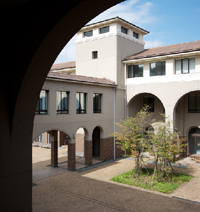
I feel extremely fortunate to be part of our program, a nursing department situated in a campus with a carefree atmosphere at a well-established university. Colleagues with various academic backgrounds never cease to inspire me. Students, about 30 percent of whom have stayed overseas for extended periods of time, never hesitate to approach and work with people from different countries. I am very proud that this new breed of nurses is growing on our campus.
I made a great escape to get away from medicine only to find myself on the other side of a Möbius loop called life and to realize that my past and future were inseparable. By serving as an instrument for education and research and making intellectual sparks with my students and colleagues, I hope to shed some light on the future of medicine. That is when I will finally be able to say that I have returned the favor to the medical community for saving my life more than thirty years ago.
Biographical Sketch
SUGIMOTO, Naomi
B.A. (1988) in Communication from International Christian University, Japan
M.A. (1989) in Speech Communication from University of Illinois at Urbana-Champaign, U.S.A.
Ph.D. (1994) in Speech Communication from University of Illinois at Urbana-Champaign, U.S.A.
After a five-year appointment at Ferris University in Yokohama, Naomi joined Keio faculty as associate professor in 2001 and then was promoted to professor in 2005. Professor Sugimoto’s major publications include: Naomi Sugimoto (2005). Iryosha no tame no komyunikeshon nyumon [Introduction to Communication for Healthcare Professionals] Tokyo: Seishin Kango Shuppan; Naomi Sugimoto (2008). Iryo komyunikeshon handobukku [Health Communication Handbook] Tokyo: Chuohoki; Naomi Sugimoto & Etsuko Oikawa (2008). Kango kanri ni ikasu gurupu komyunikeshon no kangaekata [Small Group communication for Nurse Managers] Tokyo: Japanese Nursing Association; Noriko Ainoda, Naomi Sugimoto, Takuya Adachi & Hitoshi Yoshimura (2010). Igaku kyoiku no riron to jissen [a Japanese translation of A Practical Guide for Medical Teachers edited by John A. Dent and Ronald M. Harden] Tokyo: Shinoharashinsha.
(28 June 2011)
Archive